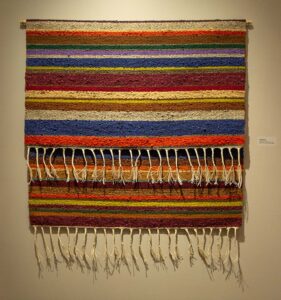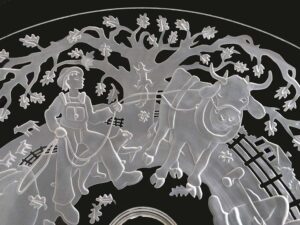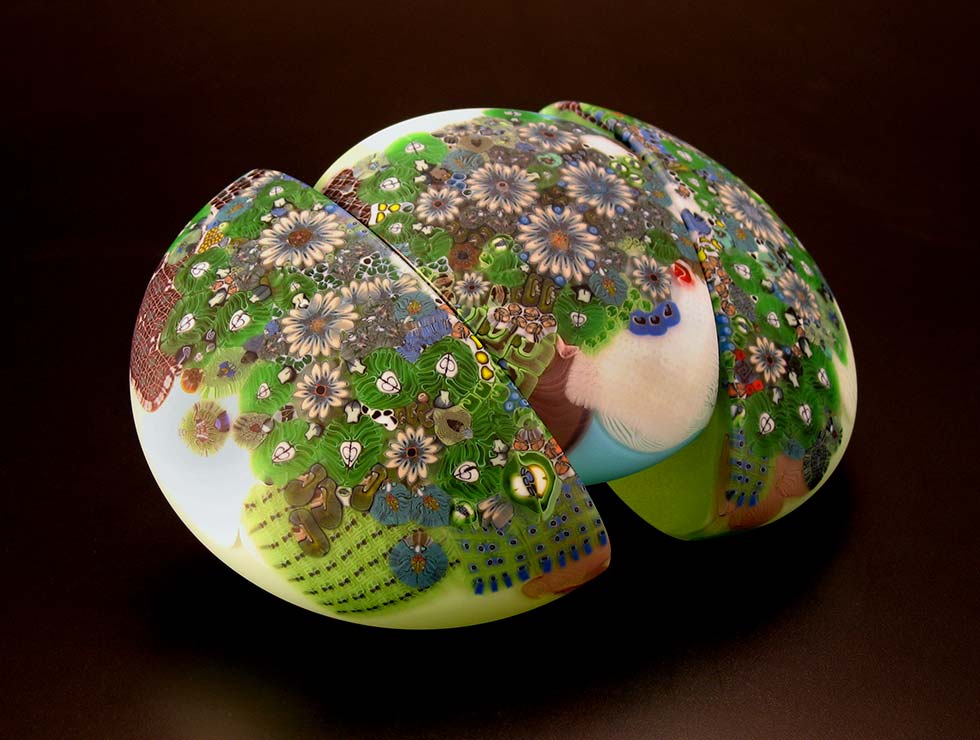WILSON, N.C. — September 1, 2021 — Fiber and glass art will be the focus of an extraordinary exhibition of works opening the 2021 fall semester season in the Barton Art Galleries on the campus of Barton College. The “Edwina Bringle, with Jan and Richard Ritter” exhibition will provide a look at three of North Carolina’s most recognized and celebrated artists. Edwina Bringle and the Ritters live and work in Penland, where each has had a long relationship with the Penland School of Crafts. The exhibition will run from August 23 through September 30.
On Thursday, September 9, the Barton Art Galleries will host a reception at 5 p.m. for the “Edwina Bringle, with Jan and Richard Ritter” exhibition. An artist lecture will follow at 6 p.m., featuring Edwina Bringle and the Ritters.
These two events are open to the public at no charge, and the community is invited to attend. Social distancing and masks will be required when visiting this exhibition. To make reservations for this event or to visit the Barton Art Galleries on a future date, please contact Maureen O’Neill, director of exhibitions and educational programming, at moneill@barton.edu or 252-399-6476.
About the artists —
Edwina Bringle lives and works in Penland. She is a fiber artist known for her use of color and design in her woven textiles and free-motion embroidered pieces. A professor of art for 24 years at the University of North Carolina at Charlotte, Bringle also has been a Penland School of Crafts Resident Artist and frequently teaches at the school. Her work is in the collections of the North Carolina Museum of History, the Greenville Museum of Art, the Mint Museum, and the Gregg Museum of Art in Raleigh.
“As a fiber artist, I focus on the use of color and design in the creation of woven textiles and mixed media stitched pieces,” Bringle notes. “I am interested in a lot of things, but color is my primary focus. My designs are inspired by my environment, and I often take photographs to capture images that later show up in my artworks as pixelated color, pattern, and texture. I live by the principle of take what you want and throw the rest away. It is important to continue to learn new things; whether it feeds my process, it keeps the mind going. When people ask me ‘How did you know you were a weaver?’ my answer is ‘I didn’t, I just never quit.’”
Jan Williams Ritter grew up on a small farm in Bucks County, Pa. She attended the Philadelphia College of Art where she received a  Bachelor of Fine Arts degree in Crafts with an emphasis in ceramics. She was also exposed to glassblowing while a student. Upon graduation, she was hired at the Moravian Pottery and Tile Works to be part of its initial restoration where she created molds, experimented with reproducing glazes and fired beehive kilns on the property. She eventually traveled to the mountains of North Carolina to study at the Penland School of Crafts and settled in the area with her family. For the past 40 years, she has shared a studio with her husband, Richard, and has created intricate glass art using hot glass, torch work, and sand blasting.
Bachelor of Fine Arts degree in Crafts with an emphasis in ceramics. She was also exposed to glassblowing while a student. Upon graduation, she was hired at the Moravian Pottery and Tile Works to be part of its initial restoration where she created molds, experimented with reproducing glazes and fired beehive kilns on the property. She eventually traveled to the mountains of North Carolina to study at the Penland School of Crafts and settled in the area with her family. For the past 40 years, she has shared a studio with her husband, Richard, and has created intricate glass art using hot glass, torch work, and sand blasting.
Richard Ritter has been an active participant in the Studio Art Glass Movement for more than 40 years, creating glass with his wife, Jan Williams Ritter, in the mountains of North Carolina near Penland School of Crafts. He is known for his work using the “murrini” process where segments with a patterned cross section, sliced from a glass rod, are incorporated into blown glass pieces. Ritter’s work has been featured on the cover of American Craft magazine, and he is the recipient of fellowships from the National Endowment for the Arts and the North Carolina Arts Council. His work has been exhibited internationally and is represented in public and private collections including the Corning Museum of Glass, the Museum of Arts and Design, the permanent White House Crafts Collection, the Mint Museum of Craft + Design, the Los Angeles County Museum of Art, and the Museum of Fine Arts in Boston. In 2011, he was declared a North Carolina Living Treasure and was honored with an exhibition, “Murrinis Within a Crystal Matrix: The Poetic Glassworks of Richard Ritter.”
END


